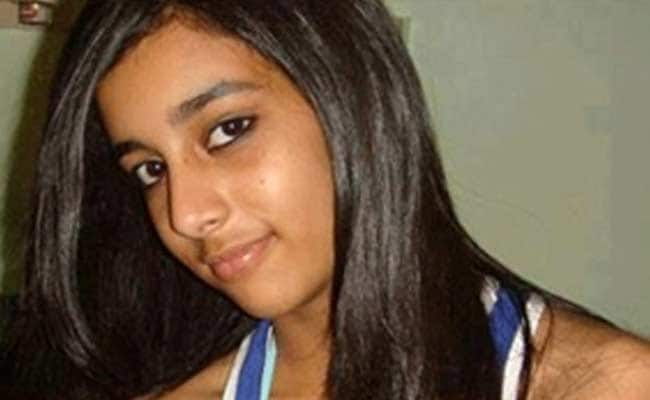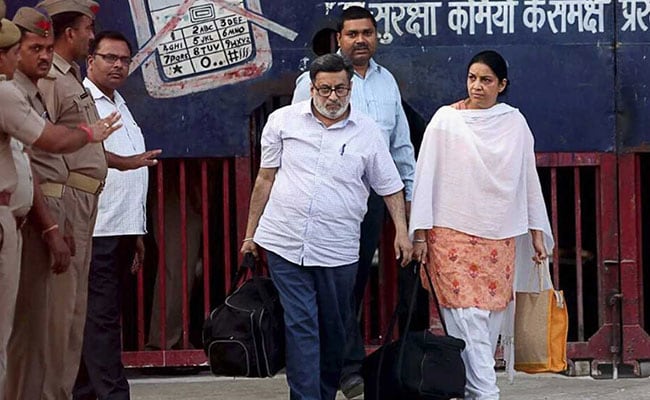Investigation by UP Police
Aarushi Talwar and Hemraj were murdered on the night of 15/16 May 2008.
The local police reached the crime scene on the morning of 16/5/2008, but failed to preserve the crime scene or examine it in detail. It is quite possible that a detailed examination of the crime scene would have revealed the body of Hemraj on the terrace. On being told that Aarushi had been murdered by Hemraj, who was reported to be absconding, the police rushed off to search for Hemraj and all their immediate activities were concentrated on locating him.

Aarushi Talwar was found dead in her bedroom in May 2008
Initial investigation by CBI
The CBI took over the investigation of this case on 31/5/2008.The initial focus was on three servants who were suspected of having committed this crime. The case against them was based on two factors.
First, a khukri was recovered from the possession of Krishna Thadarai who worked as a compounder for the Talwars and it was suspected to be the murder weapon (subsequently, on forensic examination, it was found that the khukri did not contain any traces of human blood).
Second, all the three servants were then subjected to narco tests conducted at a forensic lab in Bangalore. The tests were quite controversial and the expert who conducted them was later accused of doctoring tapes in high-profile cases and was removed from the lab. In any event, narco tests are not legal evidence, and in the absence of corroborative evidence, of no use to the investigation. This team completed their probe by 3/9/08. A final decision was then taken that there was not enough evidence to prosecute the servants and further investigation was recommended.
Findings of the Second CBI team
A fresh team was constituted to review the investigation conducted so far and carry out further investigations. The second team ruled out the servants after a detailed scrutiny of their alibis. Krishna Thadarai was found sleeping by the UP police on the morning of 16/5/2008 and his landlord confirmed that he had been home all night. Raj Kumar had accompanied his employer to pick up his wife from the New Delhi Railway Station and they had returned to the house at around 12 midnight on the night of 15/16. After that, he had served them (employers) food till around 12.45. The Talwar residence was about an hour's walk away and 20 minutes by cycle, so his involvement was ruled out. Similarly, Vijay Mandal was also found to have a strong alibi.
It was also found that there was no forced entry in the house, no finger prints or DNA traces of the servants at the scene of crime. The guards of the colony also said that they did not see any movement of the servants either coming into the colony or going out that night. They also ruled out the entry of any outsiders into the colony that night.
The role of outsiders was also ruled out because there was no loss of property, no enmity, no motive. The post mortem report said that Aarushi had not been sexually assaulted.
Finally, no one could enter Aarushi's room unless she opened the door herself or was opened by the parents who had the keys to the room.
The second team focused on the role of the Talwars. After completing the investigation, they recommended that the Talwars be chargesheeted for the following reasons:
- Sent the Noida Police on a wild goose chase by alleging that Hemraj had killed their daughter and was absconding. This resulted in a valuable 24 hours being lost and the entire crime scene being disturbed by the local public and media.
- When the body of Hemraj was discovered the next day, Rajesh Talwar refused to identify the body.
- The entire crime scene was dressed up, specially Aarushi's body, which would be highly unlikely if servants or outsiders were involved.
- Servants or outsiders would not have wasted valuable time at the crime scene trying to hide Hemraj's body.
- A half-drunk whisky bottle on the dining table with the blood of both Hemraj and Aarushi on it shows that the killer/killers drank from the bottle after the murders. Why would outsiders/servants have a drink with both parents present in the flat and waste time after committing such a heinous crime?
- Aarushi's room could have only been opened by her or the parents. The door was found open in the morning and there had been no forced entry.
- The Talwars' flat was around 1,100 sq ft and the bedroom of the Talwars and Aarushi was separated by a wooden partition. It appeared unnatural that they slept through murders being committed in the adjoining room.
- Finally, they felt the "last seen" theory was relevant in this case: all four inmates were last seen in the house at 9.30 that night by the driver. In the morning, two are found dead; if outsider entry and servants are ruled out, then the onus lies on the two surviving inmates to explain what happened.
Evidence in favour of the Talwars
- Lie detector and narco tests were carried out on them but did not confirm their complicity.
- No eye witnesses and the entire case against them was built on circumstantial evidence.
- Weapons of murder not recovered from the crime scene and no direct scientific evidence such as DNA, fingerprints etc to link the Talwars to the crime scene.
- No direct evidence to establish Hemraj's presence in Aarushi's room.
- No evidence to fix the place where Hemraj was murdered
- No clear motive for murders, only conjecture and guesswork.
Reasons for closing the case
- All murders have a motive. We have photographs of Aarushi and her parents at 10.10 pm and all appears to be normal in the Talwar household. But the post-mortem report shows two murders took place in the same house between 12 and 1.
- We do not know what happened in the intervening period.
- It is unlikely that parents would kill their only child, no matter what the provocation.
- We cannot be certain of the weapons of offence since there was no positive forensic evidence.
- The scene of crime did not give any clues regarding the involvement of the Talwars except for the dressing up of the crime scene.
- The lie detector tests on Talwars did not establish their complicity.
- No eye witnesses. The whole case was built on circumstantial evidence and expert opinion.
- No evidence to show Hemraj's presence in Aarushi's room.
The Investigating Officer was convinced of the complicity of the Talwars and had recommended that they should be charge-sheeted. A meeting with both the CBI teams that had investigated this case was held to make sure we were not missing any crucial evidence. After detailed discussions, it was felt that the evidence against the Talwars was not enough to warrant a charge sheet, and a professional investigating agency such as the CBI should only chargesheet when a case is established beyond all reasonable doubt. In this case, as explained in the preceding paras, they were too many gaps in the investigation.
The lower court thought otherwise, and after a trial, it convicted them. This decision has now been overturned by the High Court, giving them the benefit of doubt.

The Talwars walked out of Ghaziabad's Dasna jail on October 16 after four years behind bars
After the Aarushi-Hemraj murders, two very sensational murder cases were handed over to the CBI to investigate during my tenure as Director.
Shehla Masood
The first was the murder of Shehla Masood, an RTI activist in Bhopal. This was a totally blind case with no eye witnesses. After about six months, the CBI got a tip that this was a contract killing on the instructions of one Zaheeda Pervez, a local architect and interior designer. The motive was to eliminate a woman who she suspected was intimate with her paramour. In this completely blind case, the CBI was able to secure a conviction.
Bhanwari Devi
In another very sensational murder, a nurse, Bhanwari Devi, was found missing after she was reported to be blackmailing a senior minister in the Rajasthan government over a sex CD. No case of murder could be established till her body was recovered. The hired criminals had murdered Bhanwari Devi and then burnt her body and thrown the ashes into a canal along with the weapon of murder, which was a baseball bat. The CBI got the flow of water to the canal stopped with the permission of the Rajasthan government. After two days, when the canal water had receded, investigators recovered fragments of bones including teeth which were later sent to an FBI lab in USA which confirmed these were Bhanwari Devi's. A gold Titan wrist watch belonging to Bhanwari Devi was also recovered. Investigators also recovered a baseball bat 60 kms from the place of occurrence at a barrage where it was stuck. The accused confessed that they had used the baseball bat to crush her skull before burning her body.
This is just to illustrate that CBI has successfully investigated a number of blind and difficult murders.
Scotland Yard
It is not always possible to detect all crimes with a 100% record. Even agencies such as Scotland Yard are not able to solve all murders. In a high profile case, Jill Dando, the television presenter for BBC's Crime Watch, one of the most widely-watched shows, was shot dead outside her London home in 1999. One Barry George was convicted on the basis off forensic evidence but acquitted on appeal after 8 years in prison. It is still being treated as one of the greatest unsolved murders in Britain.
The Aarushi-Hemraj case is among the few murder investigations which, unfortunately and despite the best efforts of the CBI, could not be brought to a satisfactory conclusion.
(AP Singh was the Director of Central Bureau of Investigation (CBI) from 2010 to 2012)
Disclaimer: The opinions expressed within this article are the personal opinions of the author. The facts and opinions appearing in the article do not reflect the views of NDTV and NDTV does not assume any responsibility or liability for the same.


